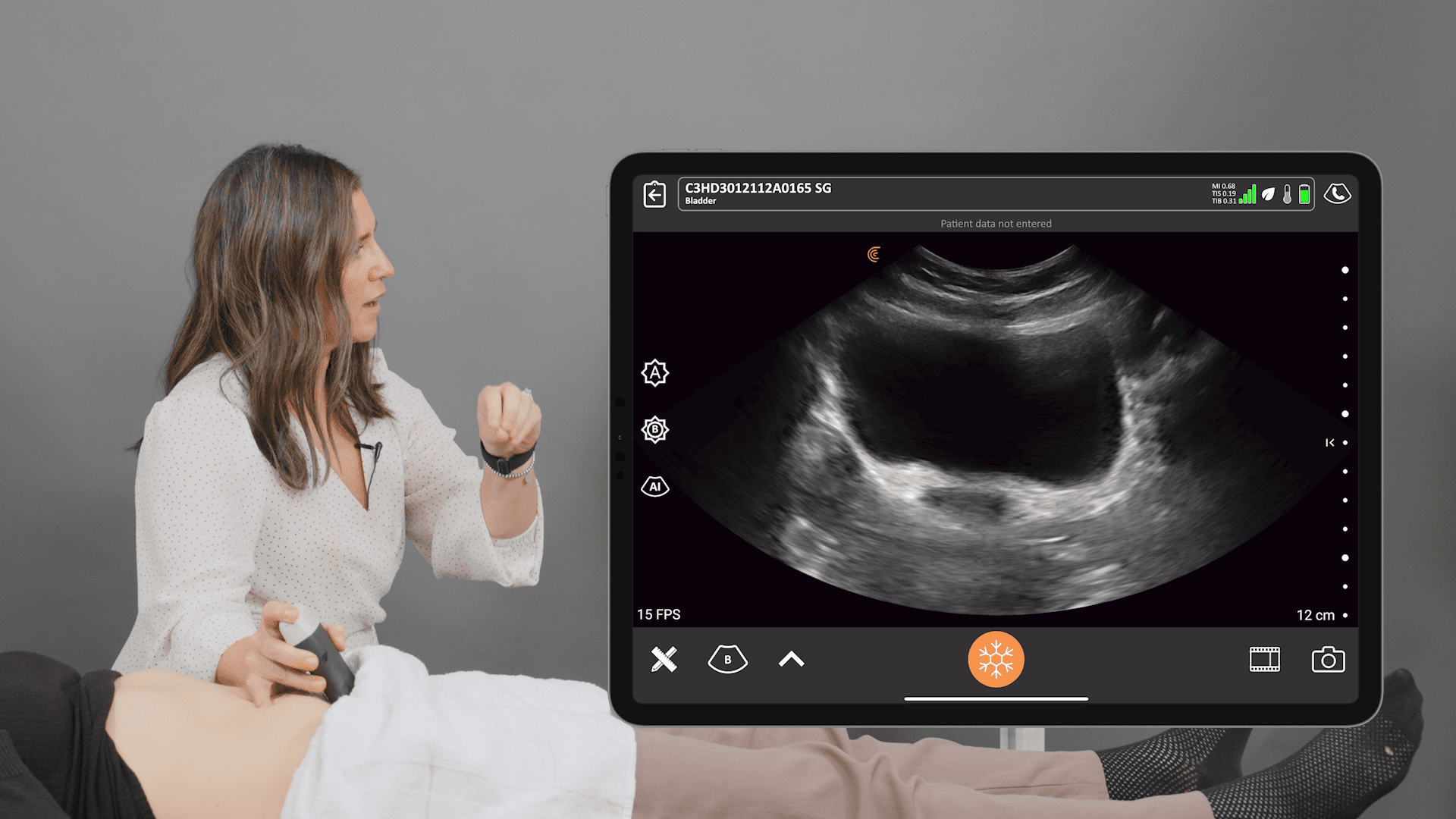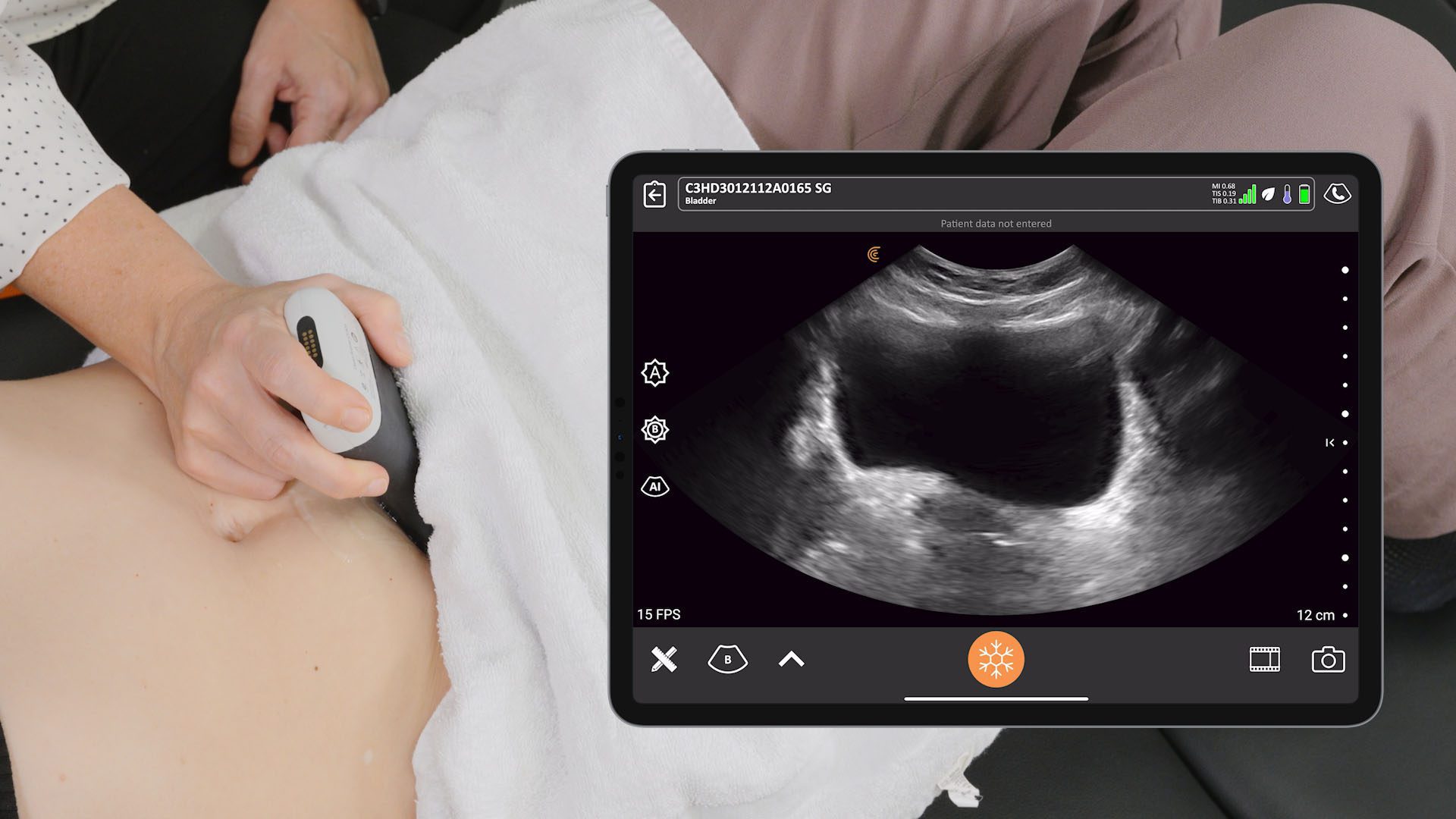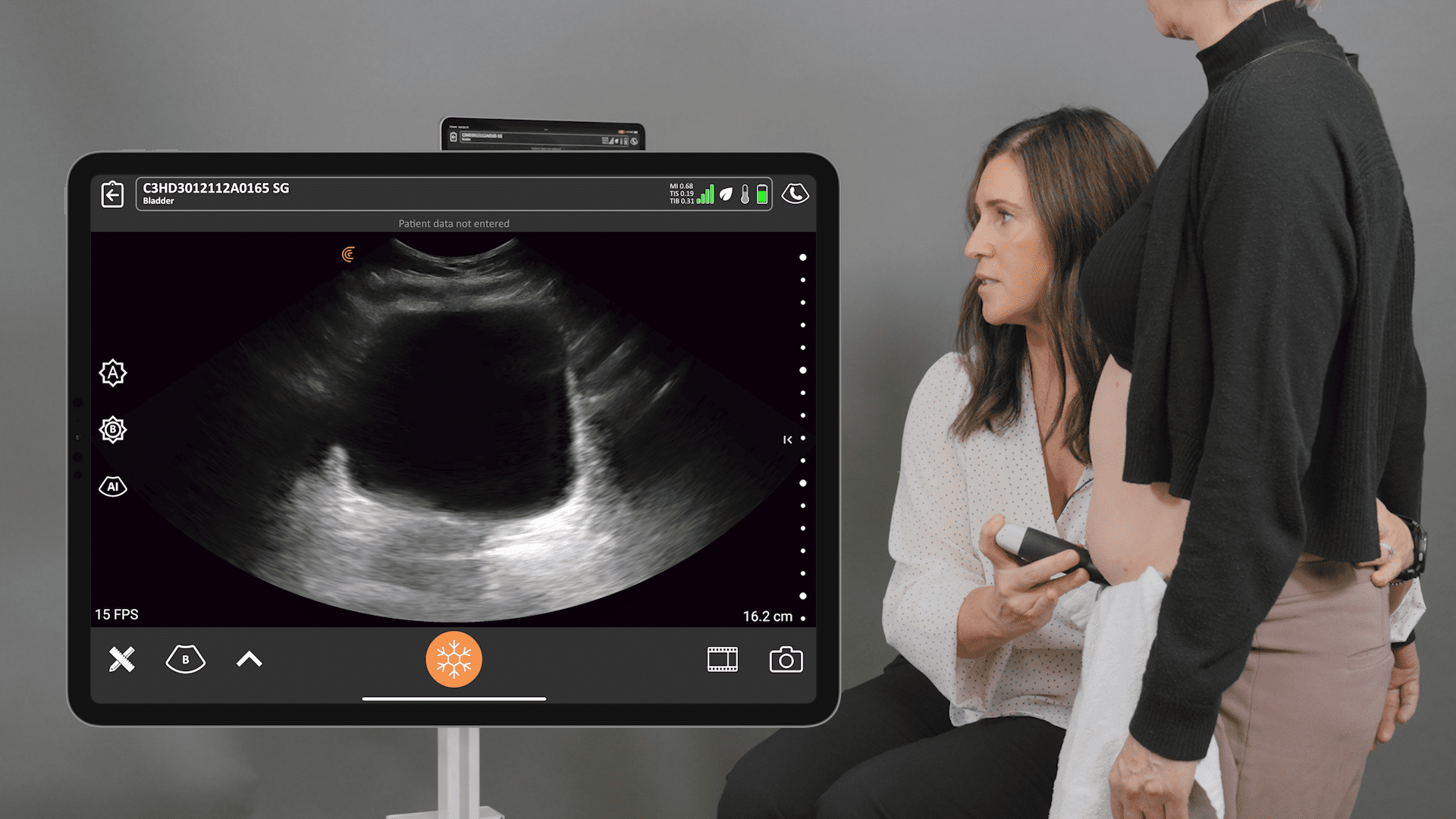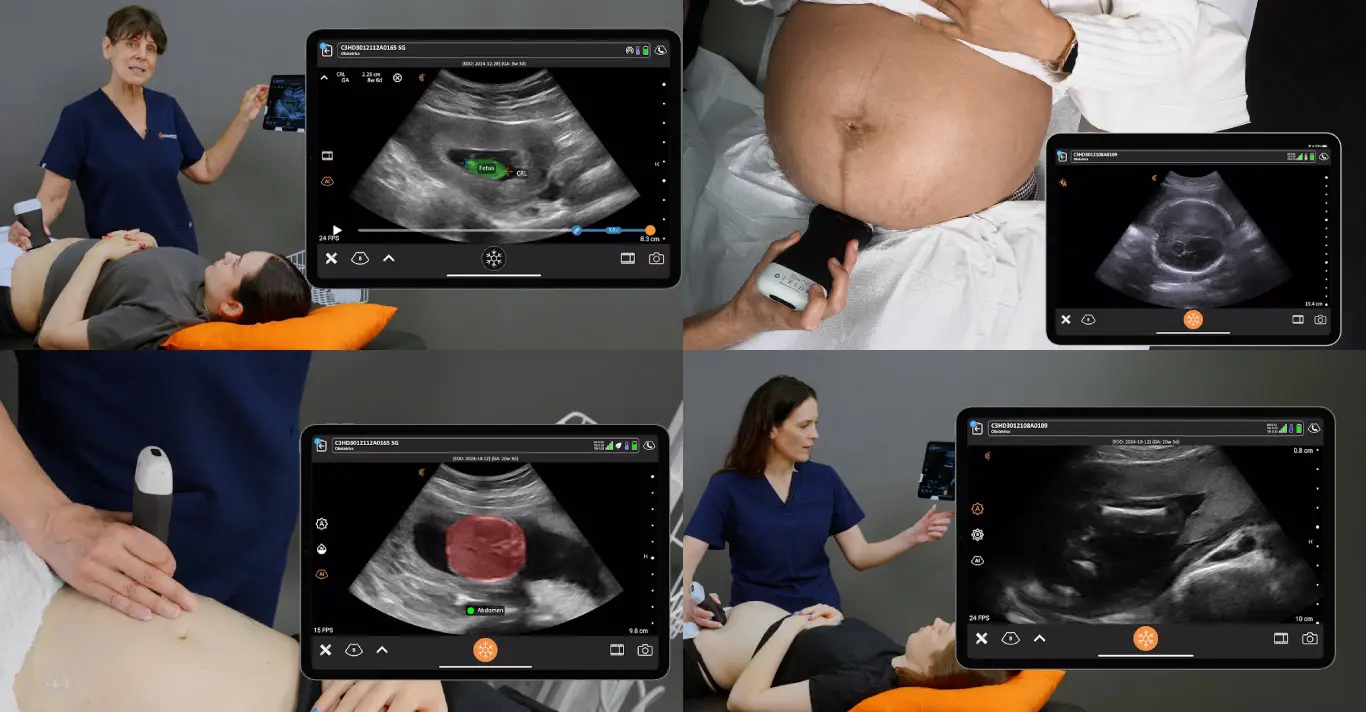Making the switch from an old cart-based system to the Clarius handheld ultrasound scanner was an easy decision according to Dr. Ulrike Dehaeck, one of seven specialists in obstetrics and gynecology practicing at the Vancouver OB/GYN clinic.
The ultrasound that we previously had in the office was a cart-based system. It was onerous to wheel into the room and often that would be a barrier to using it because you’re adding a lot of time to appointments,” she explains. “The handheld ultrasound really has simplified the ability to use the scanner. I find that I’m using it more often because it seamlessly fits in as an extension of the physical exam.”
Dr. Dehaeck was among a group of experienced Clarius ultrasound users to test drive our third-generation wireless system in advance of the official product launch. We recently had the opportunity to interview Dr. Dehaeck about how she uses ultrasound for her practice. Watch the video to hear what she had to say about the advantages of Clarius C3 HD3 for her practice. And, read her Q&A interview below.
Why do you use ultrasound in your practice?
As an obstetrician gynecologist in Vancouver, I see primary care as well as high-risk obstetrics in my practice, as well as full scope gynecology. And I also spend some of my time at WGH in a specialty clinic, focusing on lower genital tract diseases.
Ultrasound is very useful, particularly in obstetrics for providing real-time information that helps with clinical decision making. It can be useful in alleviating patient concerns or guiding clinical decision making.”
Has Clarius changed the way you use ultrasound?
Yes, because it’s so small, I often carry it with me. It connects really easily to the iPad or even my phone. I find that I’m just sort of just carrying it with me between visits. It’s easy to clean and then if I need it, I just can seamlessly connect and do a scan in the room. Ultrasound is now more accessible and available for all of us to use.
I also think it saves time. For some things that are amenable to bedside scanning, we can use Clarius to quickly confirm our clinical decision right there instead of sending a patient away for a departmental ultrasound, which takes extra time.”
How do you feel about the third generation Clarius HD?
I’m very impressed. It’s quite a bit smaller and lighter than the second generation. So, it fits very nicely into my hand and is very simple and easy to use. It’s very sleek.
The image quality’s been excellent. It’s very crisp and clean and definitely in comparison to the previous older ultrasound we were using, it’s been night and day.”
We’ve embedded the latest wireless antenna technology in the new Clarius HD. Did you notice a difference with connectivity?
I was a little bit worried about connectivity initially because the WIFI in our office isn’t very strong. But with a Clarius, I’ve had no issues with connecting whatsoever.”
How do your patients react when you use your Clarius scanner?
They love it. They can actually see the images in real-time. Often, they’ll like to have a little look at the baby’s face. The Act One feature is great for patients as they always ask for is a little photo at the end. This way we can directly email a photo of their baby.”
Could you give us some examples of when you use ultrasound?
Ultrasound helps expedite patient care for obstetrics. In many cases, it helps to alleviate the patient’s anxiety. If they’re coming in and they’re worried about something, we can scan and reassure them really quickly. For example, at 36 weeks, if we’re not sure of the position of the baby, we can confirm whether it’s head down. If it’s not, we can expedite management for that.
Other indications where I would use it include first trimester bleeding or to check the fetal heart rate. Usually when a patient comes in for their first visit within 12 weeks or less, then usually it’s much more reassuring for the patient and ourselves to be able to put the ultrasound on and see the fetal heart rate and hear it.
For gynecology patients, there are a few uses: IUD localization or directly after IUD insertion, you can confirm placement. Or if the patient’s having some struggles with their IUD, bleeding, cramping where they can’t find the strings again, you can confirm IUD position. You could also look at the ovaries to see if there’s a cyst on the ovaries, for example.”
What was your experience learning to use Clarius?
I’ve actually found it to be quite intuitive. Without even reading any manuals, I’ve been able to just explore around with the touch screen and I find that most of the time I’m able to find what I’m looking for. And I find it is very intuitive.”
About Dr. Dehaeck
Dr. Dehaeck provides care in both obstetrics and gynecology through her clinic at Vancouver Obstetrics and Gynecology. She offers minor, and major surgery including minimally invasive surgery. Dr. Dehaeck dedicates part of her clinical practice to lower genital tract diseases at her other clinic located at the BC Centre for Vulvar Health. She also participates in the education of medical students and residents at the University of British Columbia. She has been in clinical practice since 2015.
Ultrasound Tutorial with the New Clarius HD
Watch Dr. Dehaeck in action with the new Clarius C3 HD3 as she assesses gestational age and measures the fetal heart rate for a patient in her first trimester.
Clarius HD Handheld Ultrasound for OB/GYN
Wireless and app-based, Clarius portable scanners deliver the power and image quality of traditional systems for a small fraction of the cost. Clarius offers two ultrasound scanners that are suitable for obstetrics and gynecology. Learn more about which one is right for your practice. Or contact us today to request a virtual ultrasound demo.
You’re also invited to join Obstetrician and Gynecologist Dr. Dehaeck on March 24th for her free educational webinar “Third Trimester Obstetric Scans: Essential Point-of-Care Ultrasound Exams for Instant Answers.” Follow along as Dr. Dehaeck demonstrates several high-resolution wireless ultrasound exams she routinely performs. Save your seat today!












